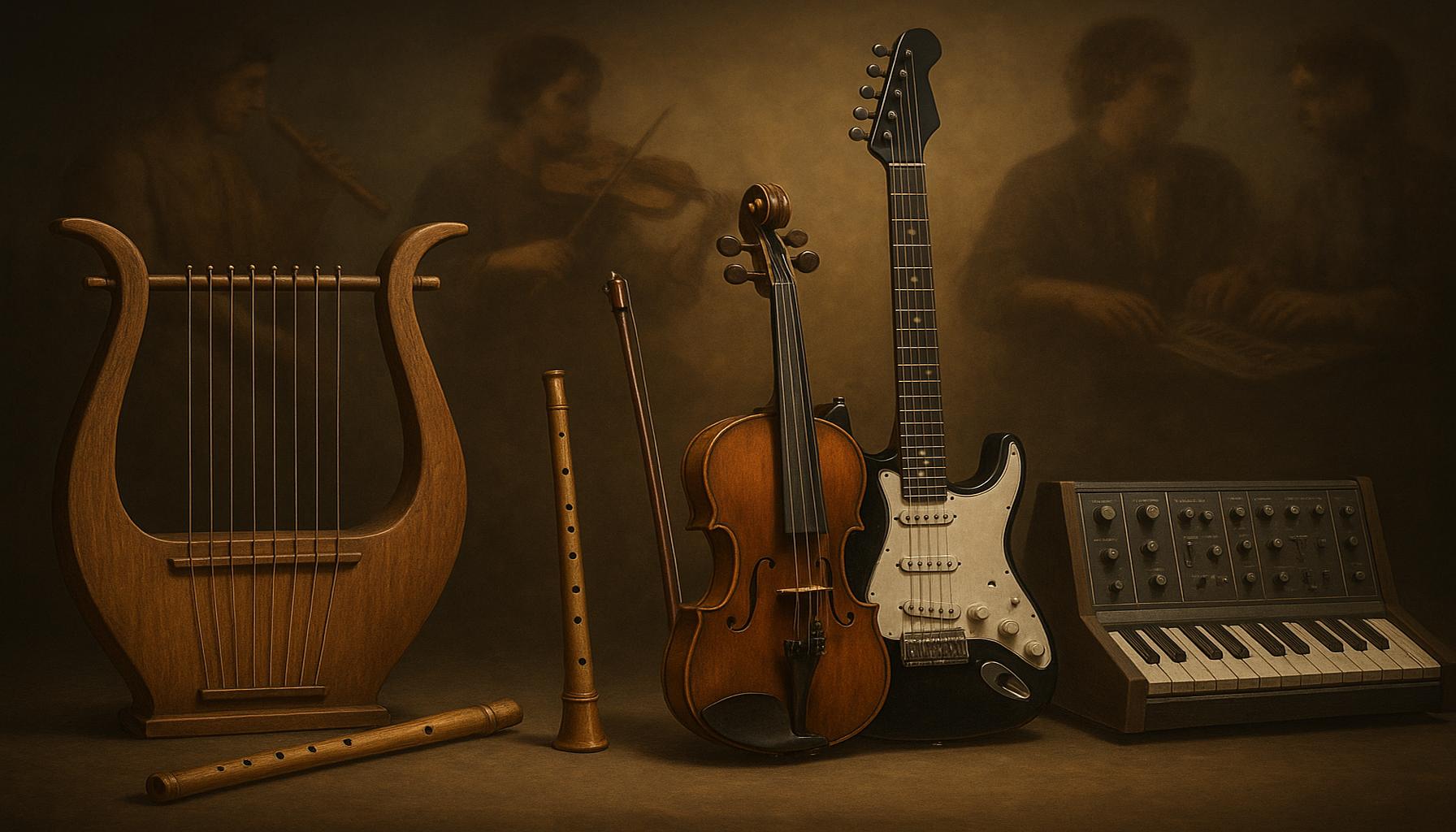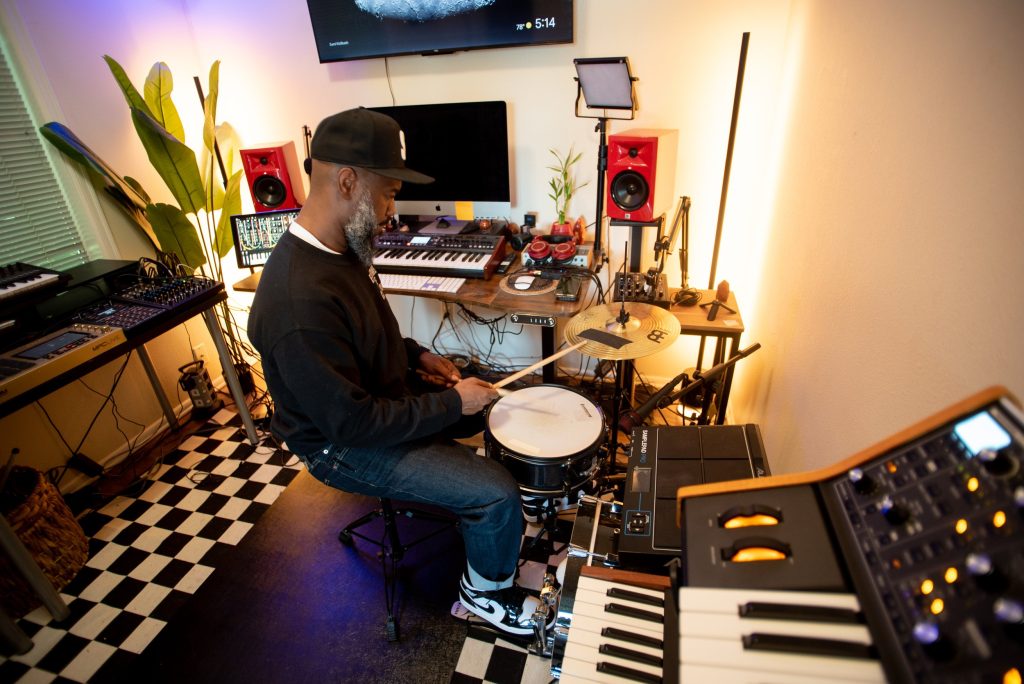The Evolution of Musical Instruments and Its Impact on Creativity

The Evolution of Musical Instruments
Beginning with ancient civilizations, the evolution of musical instruments serves as a fascinating lens through which we can examine human creativity and societal growth. Each instrument tells a story, encapsulating the emotions, values, and innovations of its time. For example, primitive drums, crafted from animal skins and hollowed logs, were not merely tools for making music but integral components of rituals, celebrations, and storytelling in ancient cultures. They connected communities, often played in sync with the natural rhythms of the earth.
Ancient Instruments: As we delve into early musical forms, we encounter simple flutes made from bones, reeds, or wood. These instruments date back tens of thousands of years and provide evidence of humanity’s innate desire to create sound. The use of natural materials reflects the relationship between early humans and their environment, turning the elements of nature into platforms for artistic expression. Similarly, early percussion instruments, like the shamanistic water drum, were known to initiate spiritual journeys within their listeners, illustrating music’s psychological impact.
Classical Era: Fast forward to the Classical Era, where we see a significant shift. The emergence of instruments such as the violin and the clarinet transformed musical composition. These string and woodwind instruments allowed for more complex melodies and harmonies, enabling composers like Bach, Mozart, and Beethoven to push creative boundaries. The sonorous depth of a string quartet created a medium for emotional and philosophical expression, aligning with the cultural revolutions of Western societies. This era laid the groundwork for future musical genres, inviting musicians to explore new emotional landscapes through structured forms.
Modern Innovations: The late 20th century witnessed a technological renaissance in music, marked by the advent of electronic instruments. Keyboards and synthesizers expanded the sonic palette available to musicians. For example, the electric guitar resulted in radical shifts in genres like rock, blues, and jazz. Legendary figures like Jimi Hendrix and Chuck Berry not only redefined electric guitar sounds but also contributed to social movements through their music. Each note played became a statement, demonstrating how the evolution of instruments could align with and fuel cultural change.
Moreover, the rise of digital audio workstations (DAWs) has made music production more accessible than ever. Now, anyone with a laptop can produce professional-quality music, transcending barriers related to traditional music education and access to expensive studio time. Independent artists like Billie Eilish have thrived in this environment, showcasing how new tools can spur creativity and drive innovation. This democratization of music creation raises important questions about the future of musical expression: How will emerging technology continue to shape the way we listen, create, and connect through sound?

As we explore the timeline of musical instruments, we are reminded of the intertwined paths of innovation and creativity. Each new development not only captures the essence of its time but also prompts us to think about what lies ahead in the expansive universe of sound. The continuous evolution of instruments offers endless possibilities, urging today’s musicians to push their creative boundaries and redefine the art of music-making in an ever-changing world.
DISCOVER MORE: Click here to learn about sustainable gardening
Instruments Through the Ages: A Musical Timeline
The journey of musical instruments reflects not only technological advancements but also the cultural and social transformations that have shaped human history. As we trace this evolution of musical instruments, we can observe how different eras brought about unique innovations that have profoundly impacted creativity in music making.
Ancient Roots: The roots of musical instruments date back to ancient civilizations where sound-making devices served ritualistic and communal purposes. Instruments such as the ancient lyre, believed to have originated in Mesopotamia around 2500 BC, showcased the early attempts of humans to integrate music into daily life. These instruments were not merely for leisure; they accompanied storytellers and held the power to unite communities through shared experiences. The legacy of such instruments laid the groundwork for complex musical traditions that would follow.
The Renaissance and Baroque Influences: Fast forward to the Renaissance, where the revival of classical knowledge ignited a surge in creativity. The invention of the harpsichord allowed composers and musicians to experiment with dynamics previously unattainable. As part of the musical evolution, the development of orchestral instruments like the bassoon and the trumpet expanded the range of sounds available to composers. Not only did this allow for greater emotional expression in works of art, but it also fostered a sense of collaboration among musicians, leading to innovative ensemble pieces.
Impact of Shape and Material: The materials and shape of instruments also played a significant role in the evolution of music. Take, for example, the transformation of the guitar from its earlier forms, such as the lute and vihuela, which were crafted from wood and gut strings. The evolution of musical instruments reflects the adaptability of musicians who constantly sought to enhance sound quality. The introduction of new materials, like metal strings and synthetic materials in modern instruments, has resulted in brighter tones and greater durability, pushing musicians toward exploring new expressive styles.
As we delve deeper into the impact of technological advancements, it is essential to consider how these changes have continually influenced creativity. Here are a few notable innovations:
- The Invention of the Metronome: This device revolutionized practice, allowing musicians to master rhythm and timing, thereby deepening their compositional skills.
- Introduction of the Amplifier: The electric guitar’s sound can be magnified, leading to the explosive development of genres like rock and roll, which played an essential role in cultural expression during the 20th century.
- Digital Audio Technology: The emergence of MIDI (Musical Instrument Digital Interface) and recording software has given artists unprecedented control over sound manipulation.
The interplay between various instrument innovations illustrates a core characteristic of human creativity: a desire to experiment and explore. Each new development provided musicians with fresh opportunities and challenges, continuously reshaping the sonic landscape of their times. As we observe these transformations, it is clear that the evolution of instruments has not only facilitated creative expression but has actively influenced the way we conceive of music itself.
| Category | Description |
|---|---|
| Historical Instruments | Instruments like the lute and harpsichord shaped early musical expression, influencing contemporary genres. |
| Modern Innovations | Digital platforms and synthesizers unleash new creativity, allowing limitless exploration of sound. |
| Cultural Impact | Instruments from diverse cultures promote global collaboration in music creation. |
| Emotional Connectivity | The evolution of instruments reveals their power to express human emotion, enhancing personal creativity. |
The journey of musical instruments is not simply about the evolution of hardware; it’s a profound narrative woven into the fabric of human creativity and expression. The transition from historical instruments like the lute and harpsichord set a foundation for today’s musical language, affecting virtually all modern genres. As we delve into modern innovations, synthesis and digital platforms have redefined creativity, mitigating boundaries and inspiring experimentation with sound like never before.Furthermore, musical instruments are vessels of culture. Diversity in instrumentation invites collaboration across global music scenes, fostering a richer exchange of ideas. This interaction adds layers to creativity, encouraging artists to push their creative boundaries.Lastly, the emotional connectivity that instruments offer is fundamental. The evolution of these tools reflects our desires and emotions, catalyzing creative expression that resonates deeply with audiences. Such interconnections profoundly impact musicianship, thus sustaining the cycle of innovation in music.
DISCOVER MORE: Click here to dive into the transformation of creativity through technology!
Revolutionizing Sound: The Modern Era of Instruments
As we transition into the 20th century and beyond, we witness an explosion of creativity fueled by innovations in musical instruments that continue to reshape the landscape of music. The advent of electronic instruments has opened up new realms of artistic expression, transforming the way musicians create and perform.
The Birth of Electronic Instruments: The first significant shift came with the invention of the synthesizer in the 1960s. Created to imitate various traditional instruments, the synthesizer offered unprecedented flexibility in sound design. Artists like Wendy Carlos showcased its capabilities in pioneering electronic music, melding classical compositions with avant-garde sounds. By manipulating waveforms, filters, and modulation, musicians could explore a virtually infinite palette of auditory textures, leading to entirely new genres such as synth-pop and electronic dance music (EDM).
The Rise of Sampling: Another hallmark of modern musical evolution is the technique of sampling, a practice that allows musicians to incorporate snippets of sound from the past. Iconic producers like Quincy Jones and DJ Kool Herc utilized samples to craft distinctive beats, which not only paid homage to previous artists but also paved the way for innovation in hip-hop and global music genres. As technology progressed, software like Pro Tools and Ableton Live further democratized music production, enabling not only industry professionals but also aspiring musicians to engage in high-quality sound creation from their home studios.
- Impact of MIDI: MIDI technology revolutionized music composition, allowing instruments to communicate digitally and enabling users to control multiple devices from a single keyboard. This versatility has made it easier for composers to experiment with orchestration and arrangement.
- The Evolution of the Electric Guitar: Electric guitars have evolved with technology, incorporating digital effects, making them staples in rock, metal, and pop music. This shift has allowed for innovative techniques such as looping and live sampling, resulting in groundbreaking performances.
- Software Instruments: The emergence of software instruments has provided musicians with even more tools for creativity. Virtual instruments replicate traditional sounds while also allowing the exploration of entirely new ones, shaping genres like indie pop and experimental music.
Cultural Influence and Globalization: The globalization of music has also played a crucial role in the evolution of instruments. Artists across cultural boundaries leverage technology to blend styles and instruments, enriching the fabric of contemporary music. For example, the integration of traditional African drumming patterns with modern electronic beats has birthed new genres, such as afrobeat, allowing musicians to draw from a rich tapestry of cultural sounds while fostering innovation.
As we explore these advancements, it is compelling to recognize how the evolution of musical instruments continually nurtures creativity, reflecting our ever-changing society. The ability to transcend traditional boundaries not only invigorates individual artistry but also infuses the collective musical narrative with diversity and innovation.
Moreover, as technology marches forward, the future of musical instruments appears poised for even more radical transformative shifts. Innovations such as augmented and virtual reality instruments are on the horizon, promising an even more interactive and immersive musical experience. With such prospects, the ongoing evolution of musical instruments will undeniably continue to influence creativity for generations to come, beckoning artists to explore the dynamics of sound in unimaginable ways.
DIVE DEEPER: Click here to discover watercolor techniques
Conclusion: Embracing a Harmonious Future
The evolution of musical instruments has been a remarkable journey, reflecting the essence of human ingenuity and creativity. From the rudimentary beginnings of ancient tools to the sophisticated electronic devices of today, each innovation has broadened the horizons of what is musically possible. The transformative power of electronic instruments has led to a fusion of genres and styles, creating a vibrant soundscape that resonates across cultural boundaries. As seen with the synthesis of traditional sounds and modern techniques, contemporary musicians are now equipped to craft unmistakable sound identities.
In tandem with this technological progression, the democratization of music production through tools like software instruments and sampling has empowered a new generation of artists. No longer are the gates of creativity confined to established studios; today, musicians can produce high-quality music from their living rooms, inviting diverse voices and experiences to the forefront. This collective creativity not only enriches individual artistry but also weaves a complex tapestry of sound that reflects our shared human experience.
Looking ahead, the possibilities seem endless. Innovations such as augmented and virtual reality instruments promise to further revolutionize how we experience and interact with music, fostering an immersive environment for creative exploration. As we embrace these advancements, the ongoing evolution of musical instruments will continue to inspire, challenge, and ignite the imaginations of artists and listeners alike. Ultimately, the interplay between technology and creativity will remain a driving force in shaping the future of music, encouraging individuals to express their unique voices and redefine the boundaries of artistic expression.


